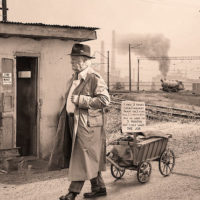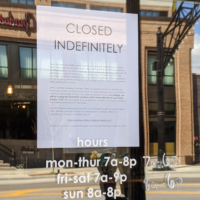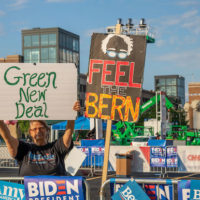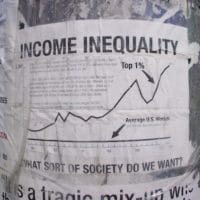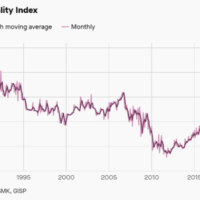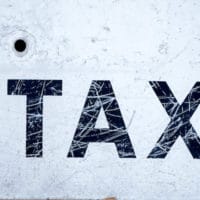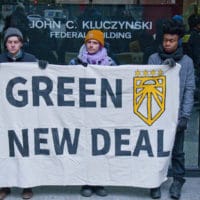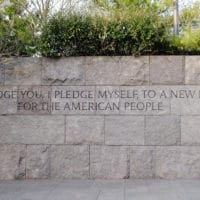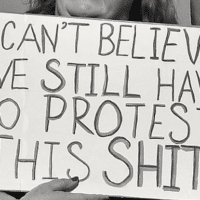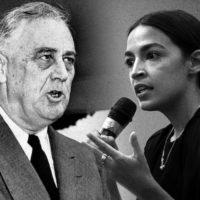-
Racism, COVID-19, and the fight for economic justice
While the Black Lives Matter protests sweeping the United States were triggered by recent police murders of unarmed African Americans, they are also helping to encourage popular recognition that racism has a long history with punishing consequences for black people that extend beyond policing.
-
The economy: we are still in big trouble
The announcement by the Bureau of Labor Statistics that the federal unemployment rate declined to 13.3 percent in May, from 14.7 percent in April, took most analysts by surprise. The economy added 2.5 million jobs in May, the first increase in employment since February. Most economists had predicted further job losses and a rise in the unemployment rate to as high as 20 percent.
-
Victory: Ohio’s plan to deny workers their unemployment insurance is shelved
In early May, Ohio Republican Governor Mike DeWine began reopening the state economy. And to support business and slash state expenses, both at worker expense, he had a “COVID-19 Fraud” form put up on the Ohio Department of Job and Family Services website where employers could confidentially report employees “who quit or refuse work when it is available due to COVID-19.”
-
The 1930s and now: Looking back to move forward
While there are great differences between the crises and political movements and possibilities of the 1930s and now, there are also important lessons that can be learned from the efforts of activists to build mass movements for social transformation during the Great Depression. My aim in this paper is to illuminate the challenges faced and choices made by these activists and draw out some of the relevant lessons for contemporary activists seeking to advance a Green New Deal.
-
Coronavirus: a return to normal is not good enough
We shouldn’t be satisfied with a return to normalcy. We need a “new normal.”
-
The Green New Deal and the State: Lessons from World War II—Part I
There is growing interest in a Green New Deal, but far too little discussion among supporters about the challenging nature of the required economic transformation, the necessary role of public planning and ownership in shaping it, or the strategies necessary to institutionalize a strong worker-community voice in the process and final outcome.
-
Health check: U.S. manufacturing is in trouble
President Trump is all in, touting his success in rebuilding U.S. manufacturing. For example, in his state of the union address he claimed: We are restoring our nation’s manufacturing might, even though predictions were that this could never be done. After losing 60,000 factories under the previous two administrations, America has now gained 12,000 new […]
-
Climate change, the Green New Deal, and the struggle for climate justice
Most calls for a Green New Deal correctly emphasize that it must include a meaningful commitment to climate justice. That is because climate change—for reasons of racism and capitalist profit-making—disproportionately punishes frontline communities, especially communities of color and low-income.
-
When it comes to pay, U.S. business leaders are world champs
U.S. CEOs not only draw the highest salaries (including bonuses and equity awards, etc.), but they are king of the hill when it comes to lording it over their employees, as illustrated by the high ratio of CEO to worker earnings.
-
Another sign of the deepening social crisis: The decline in U.S. life expectancy
U.S. life expectancy is on the decline, falling from 2014 to 2017—the first years of decline in life expectancy in over twenty years.
-
The harsh reality of job growth in America
There are many reasons for those at the top of the U.S. income distribution to celebrate the performance of the U.S. economy and tout the superiority of current U.S. economic and political institutions and policies. Unfortunately, there is a strong connection between the continuing gains for those at the top and the steadily deteriorating employment conditions experienced by growing numbers of workers.
-
Overworked America
Those living in the U.S. are encouraged to think that they live in the best country in the world with little to learn from the experiences of working people in other countries. This sense is reinforced by the fact that the mainstream media generally discusses U.S. problems without reference to developments or trends in other developed capitalist countries.
-
A wealth tax: because that’s where the money is
The bank robber Willie Sutton, when asked by a reporter why he robbed banks, is reputed to have answered, “Because that’s where the money is.” Which brings us to a wealth tax.
-
Flying above the clouds: the U.S. military and climate change
Climate change is occurring, highlighted by dramatically shifting weather patterns and ever more deadly storms, floods, droughts, and wildfires. And the evidence is overwhelming that it is driven by the steady increase in greenhouse gases in our atmosphere, especially carbon dioxide and methane, produced by our fossil fuel-based economic system.
-
What the New Deal can teach us about winning a Green New Deal: Part V—summing up the New Deal experience
Growing awareness of our ever-worsening climate crisis has boosted the popularity of movements calling for a Green New Deal. At present, the Green New Deal is a big tent idea, grounded to some extent by its identification with the original New Deal and emphasis on the need for strong state action to initiate social-system change on a massive scale. Challenges abound for Green New Deal activists.
-
What the New Deal can teach us about winning a Green New Deal: Part III—the First New Deal
If we hope to win a Green New Deal we will have to build a movement that is not only powerful enough to push the federal government to take on new responsibilities with new capacities, but also has the political maturity required to appreciate the contested nature of state policy and the vision necessary to sustain its forward march.
-
What the New Deal can teach us about winning a Green New Deal: Part II—Movement building
The multifaceted crisis we face today is significantly different from the crisis activists faced in the first years of the Great Depression. But there is no question that, much like then, we will need to build a powerful, mass-movement for change if we hope to harness state power to advance a Green New Deal.
-
What the New Deal can teach us about winning a Green New Deal: Part I
The New Deal has recently become a touchstone for many progressive efforts, illustrated by Bernie Sanders’ recent embrace of its aims and accomplishments and the popularity of calls for a Green New Deal.
-
Growing old in America: Baby Boomer nightmare
Despite its reputation as the wealthiest generation, baby boomers (generally considered to be those born between 1946 and 1964) are facing a retirement nightmare.
-
Portrait of the 2009-2019 U.S. expansion
June 2019 marks the 10th anniversary of the current U.S. economic expansion. If it makes it through July it will surpass the 1991-2001 expansion as the longest on record. But while expansions are to be preferred over recessions, there are many reasons to view this record-breaking expansion critically. In fact, the nature of this expansion, hopefully captured in the following portrait, highlights the growing inability of the U.S. economic system, even when performing “well,” to meet majority needs.




